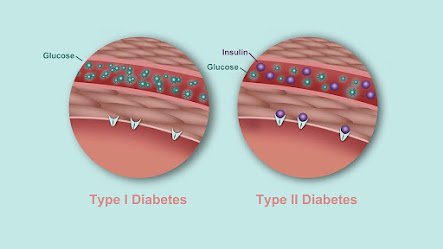Diabetes is a chronic medical condition that affects how your body processes blood sugar (glucose). There are two main types of diabetes: type 1 and type 2. While both types of diabetes have high blood sugar as a common symptom, they differ in their underlying causes, treatment options, and management strategies.
Type 1 diabetes:
Type 1 diabetes, also known as insulin-dependent diabetes or juvenile diabetes, is an autoimmune disorder. It occurs when the immune system attacks and destroys the insulin-producing beta cells in the pancreas, leaving the body unable to produce enough insulin. Insulin is a hormone that helps regulate blood sugar levels, allowing glucose to enter the body's cells for energy.
Symptoms of type 1 diabetes usually develop rapidly, often over a few weeks, and can include:
Frequent urination
Excessive thirst
Extreme hunger
Fatigue
Blurred vision
Unintentional weight loss
Slow-healing cuts or sores
Dry mouth and itchy skin
Type 1 diabetes is typically diagnosed in children, teenagers, or young adults, but it can occur at any age. There is no cure for type 1 diabetes, and people with this condition must take insulin injections or use an insulin pump to regulate their blood sugar levels.
Type 2 diabetes:
Type 2 diabetes is a metabolic disorder that occurs when the body becomes resistant to insulin or doesn't produce enough insulin to maintain normal blood sugar levels. Unlike type 1 diabetes, type 2 diabetes is not an autoimmune disorder.
Symptoms of type 2 diabetes may develop gradually and can include:
Frequent urination
Excessive thirst
Fatigue
Blurred vision
Slow-healing cuts or sores
Tingling or numbness in the hands or feet
Recurring infections, such as gum or skin infections
Type 2 diabetes is most commonly diagnosed in adults over the age of 45, but it can occur in younger people, especially those who are overweight or have a family history of diabetes. Treatment for type 2 diabetes includes lifestyle changes, such as eating a healthy diet and exercising regularly, as well as medications and insulin therapy in some cases.
In summary, type 1 diabetes is an autoimmune disorder that occurs when the immune system destroys the insulin-producing cells in the pancreas, while type 2 diabetes is a metabolic disorder that occurs when the body becomes resistant to insulin or doesn't produce enough insulin. Treatment options vary depending on the type of diabetes, and management strategies may include lifestyle changes, medication, and insulin therapy.
